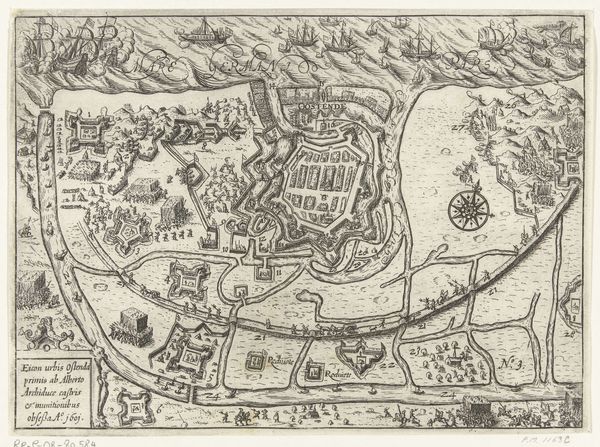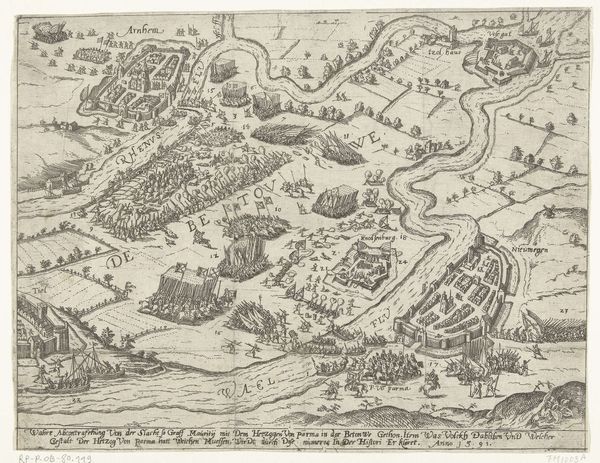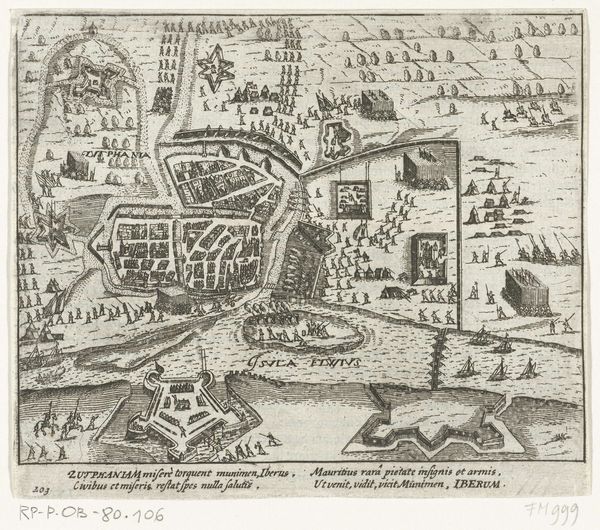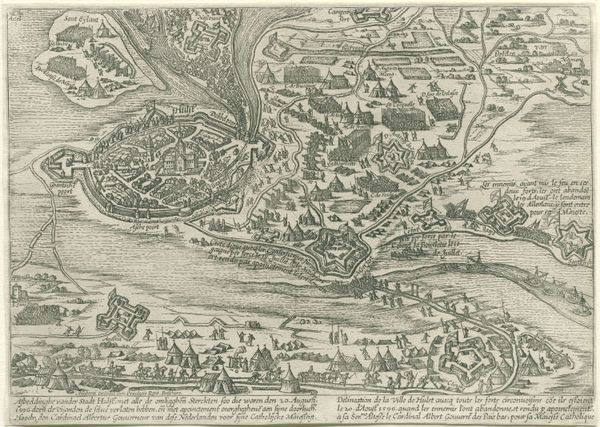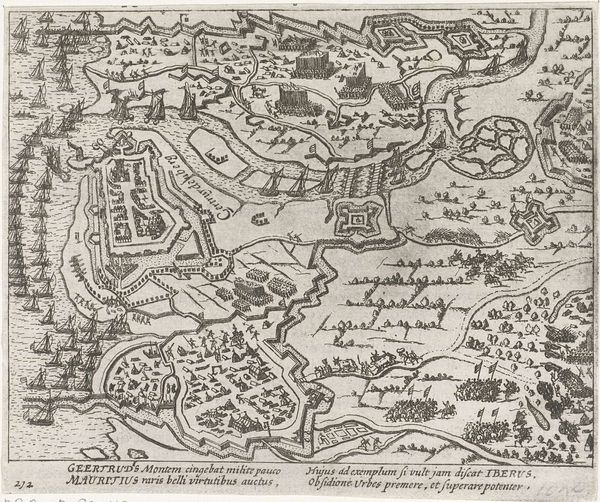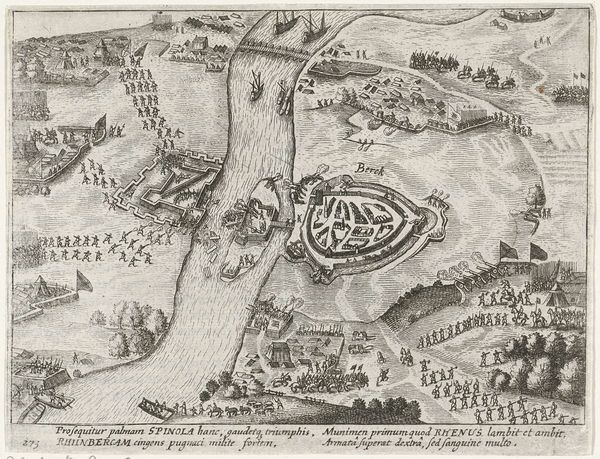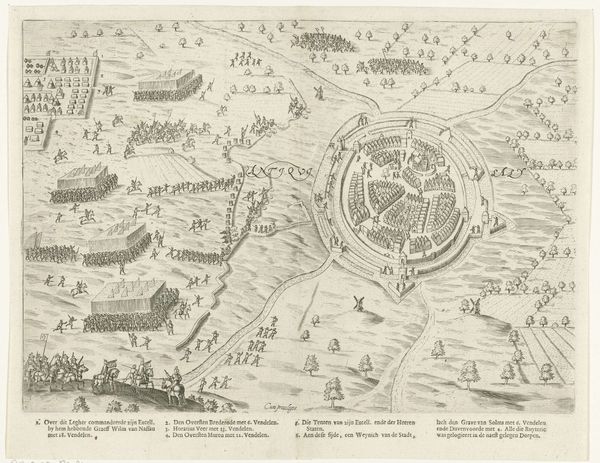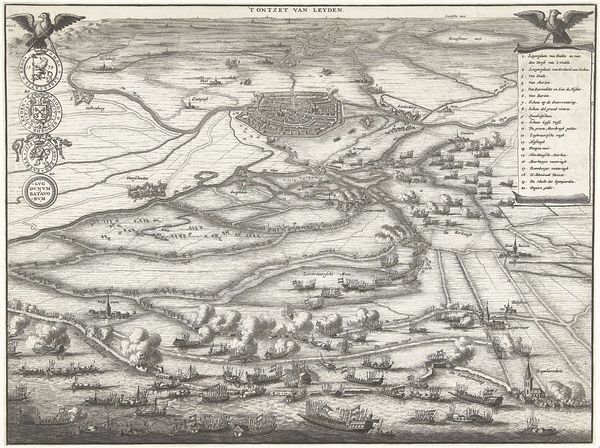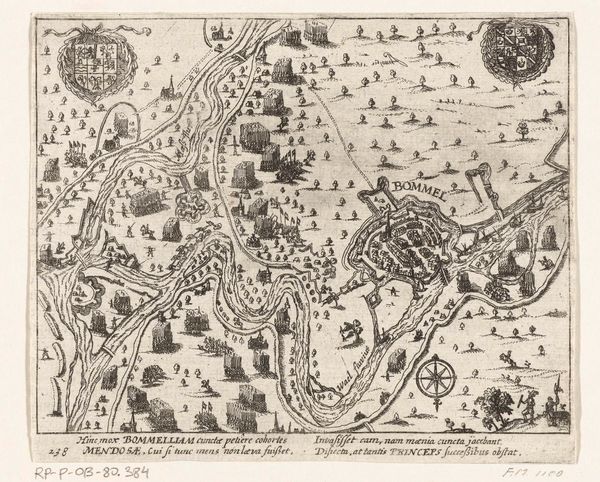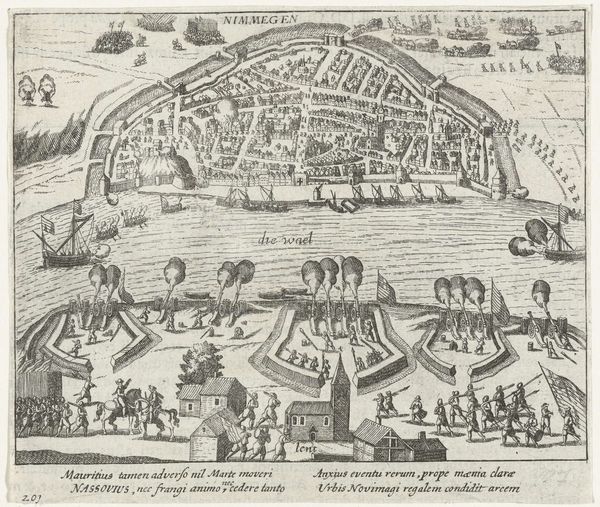
Beleg en inname van Antwerpen in 1584/1585: de dijken bij Antwerpen doorgestoken 1613 - 1615
0:00
0:00
anonymous
Rijksmuseum
print, intaglio, engraving
#
baroque
#
dutch-golden-age
# print
#
pen illustration
#
intaglio
#
old engraving style
#
landscape
#
line
#
cityscape
#
history-painting
#
engraving
Dimensions: height 135 mm, width 159 mm
Copyright: Rijks Museum: Open Domain
Editor: This detailed engraving, created anonymously between 1613 and 1615, depicts "The Siege and Capture of Antwerp in 1584/1585: the dikes near Antwerp pierced". Looking at this print, I’m immediately struck by the starkness of the lines and the vastness of the landscape, emphasizing a sense of vulnerability and impending doom. What layers of history and social dynamics are embedded in this seemingly straightforward depiction of a siege? Curator: This print offers us a potent visual entry point into understanding the Eighty Years’ War and its devastating impact on the Netherlands. What we see isn't just a landscape, but a power struggle made visible. The act of piercing the dikes was a strategic maneuver, yes, but it was also a violent reshaping of the land, and thus, a symbolic violation of the Dutch identity which was, and still is, inextricably linked to their management of water. How does the artist convey that sense of violation, do you think? Editor: I guess it's evident in the way the land is organized, divided, categorized almost, and how human actions interrupt these careful structures and control attempts. It reminds me of similar modern acts of deforestation that permanently damage the environment, regardless of the economic purposes behind it. Curator: Precisely. And within this "landscape of conflict", where do you see the people? How are they represented, and what does their portrayal suggest about their agency, or lack thereof, during this period? Think about the ways in which art serves not just to document, but to also shape and solidify historical narratives. Editor: It's interesting... they almost seem minimized, like ants. It reinforces the idea that the environment itself played a bigger role, perhaps suggesting their helplessness in the face of overwhelming forces, or simply reminding me how many anonymous, ordinary lives this event actually touched. Now I'm questioning what the purpose of images like this were; didactic? Memorial? Curator: Perhaps both. The print allows us to explore the intersection of military strategy, environmental manipulation, and the representation of collective trauma, prompting questions about power, identity, and resilience during a time of immense upheaval. It makes one think about other sieges represented through the centuries. Editor: Thank you, it really reframed my reading of the print. It’s more than just an illustration; it is a visual testament to a critical moment in Dutch history that continues to resonate today.
Comments
No comments
Be the first to comment and join the conversation on the ultimate creative platform.
